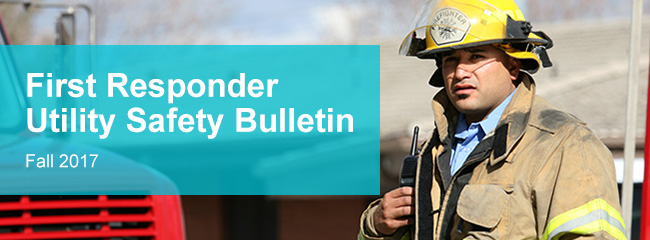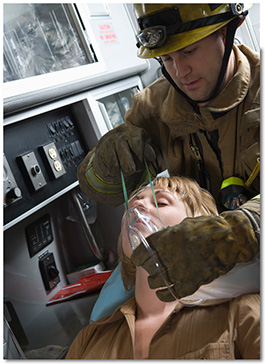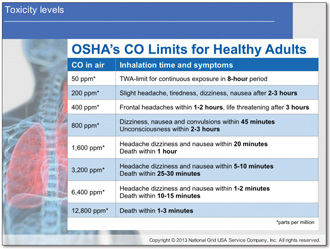Connect with us.

But you can protect yourself, your fellow first responders and people in your community by knowing how to prevent CO poisoning. Case-in-point: Dozens suffer CO poisoning in TribecaJune 2017, more than 30 people suffered carbon monoxide poisoning when a boiler malfunctioned in a Tribeca property, a neighborhood located in lower Manhattan. Noxious gas began flooding the basement in the early morning, but it wasn’t until people began passing out on the ground floor that first responders were called. Thirty-two people were treated on the scene before transported to local hospitals. First responders blocked off several surrounding streets as they investigated the source of the leak. They later determined a boiler pipe was the root cause. The pipe was capped, ultimately restoring air quality to appropriate levels. Train to respond safely to carbon monoxide incidentsThe National Grid First Responder Utility Safety Training Program is an e-learning program that provides emergency response personnel with a solid understanding of utility hazards. For example, Module 3 of National Grid’s online Natural Gas Safety Training Certification Program, entitled Carbon Monoxide Poisoning, addresses CO characteristics, toxicity levels, poisoning symptoms, sources, detection and more. Through this training, you will learn the knowledge, skills and technical ability required to rercognize, respond and prevent carbon monoxide poisoning.
Call Before You DigRemind your colleagues, friends and the public to call your underground utility locator service toll-free at 811 well in advance of digging or moving the earth in any way. They will arrange to mark underground natural gas pipelines, underground electric power lines and other buried utilities so that everyone can work safely. Keep yourself, your team and the public safe. Register today, and complete your utility safety training. Visit firstresponder.ngridsafety.com.
|
||||||||||||||||||||||||||||||||||||||||||


